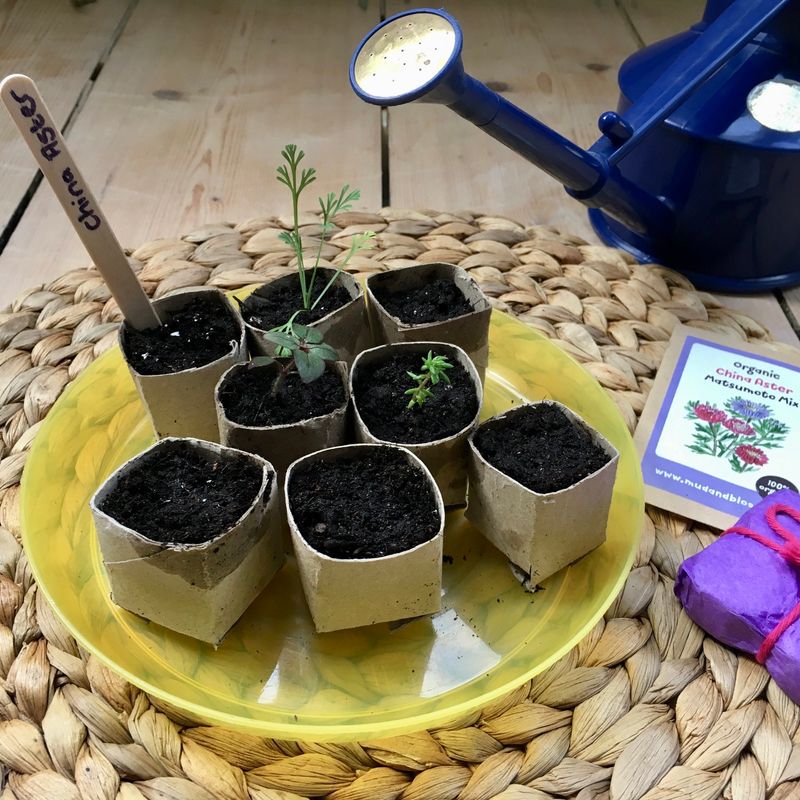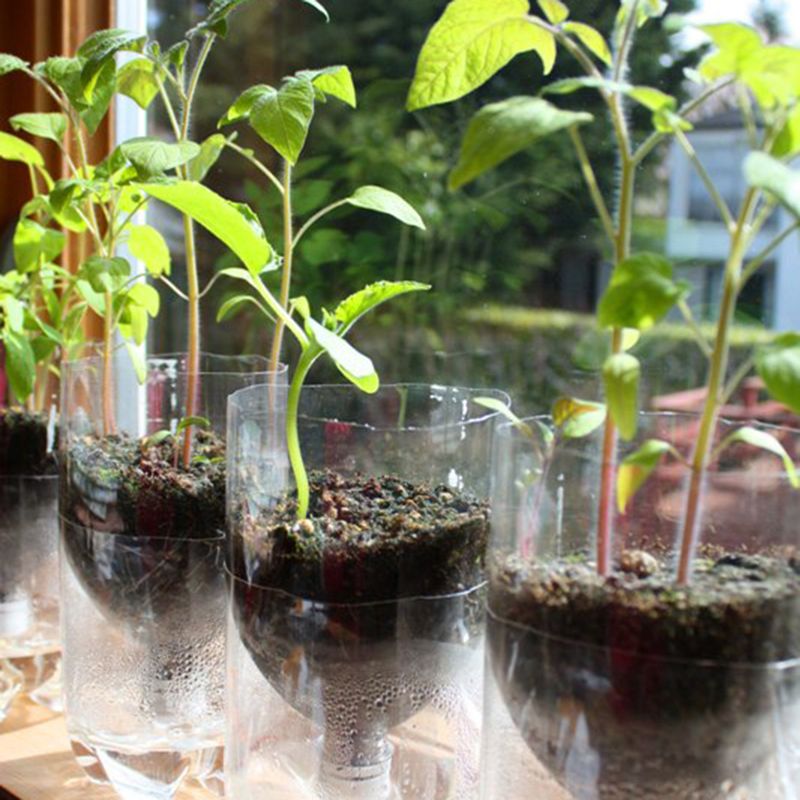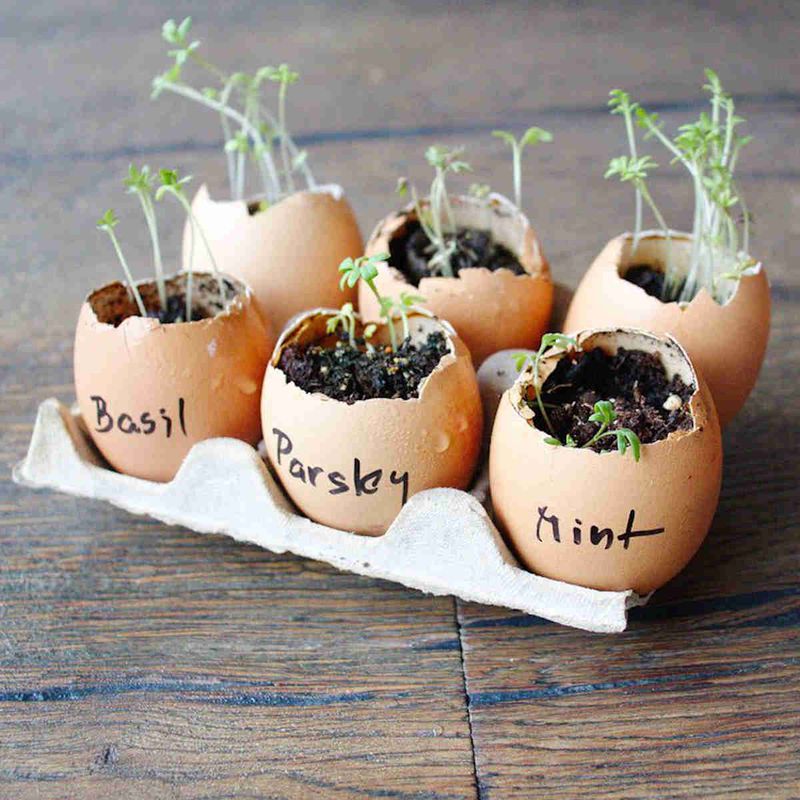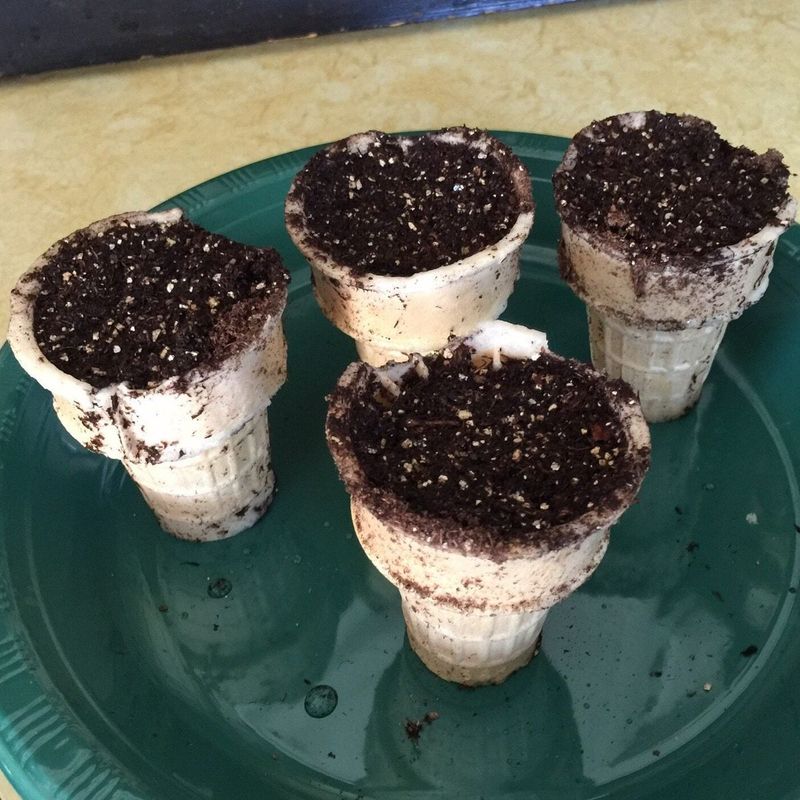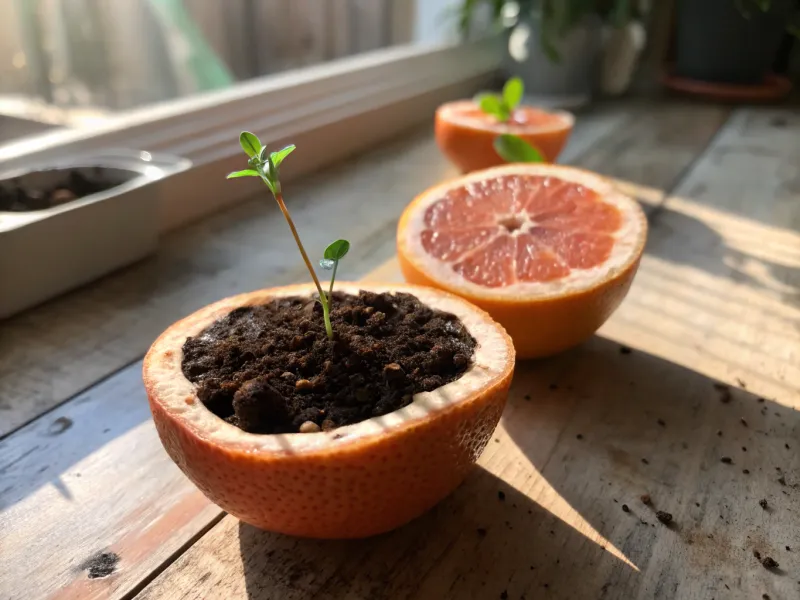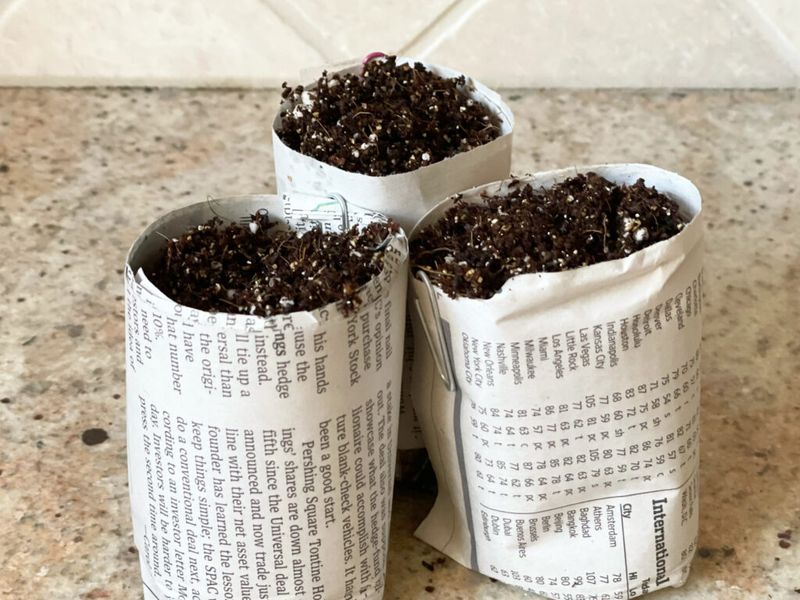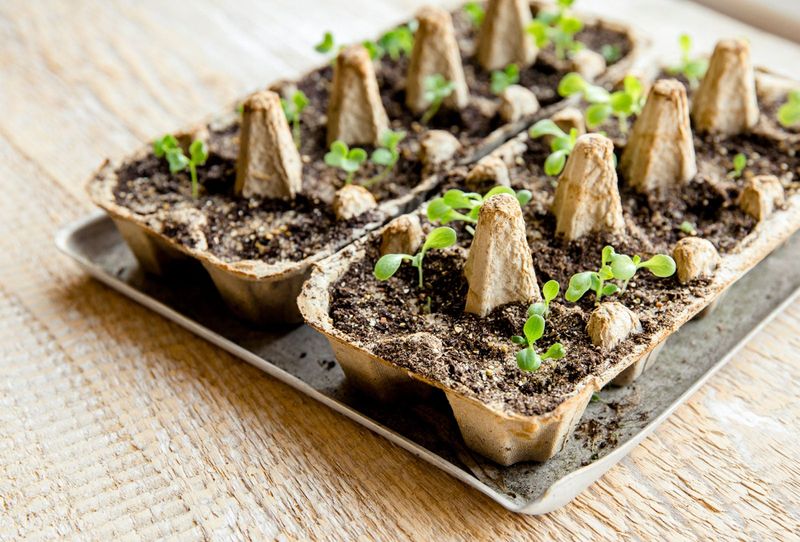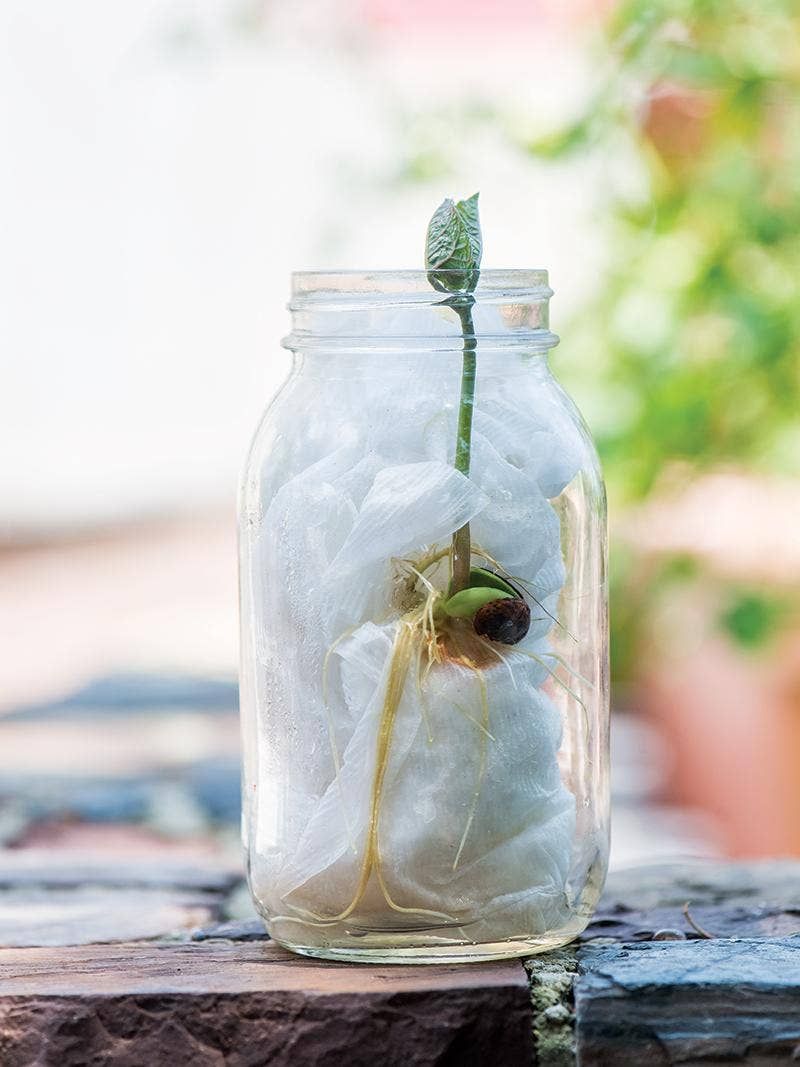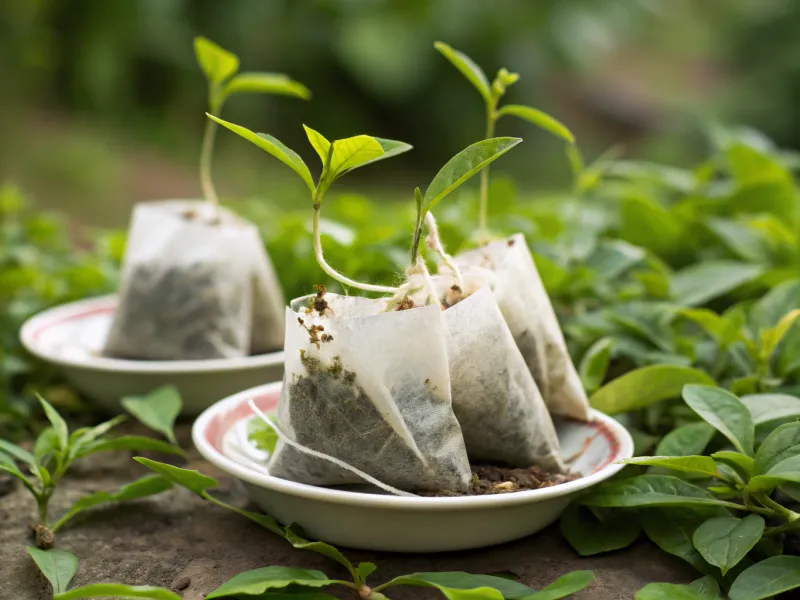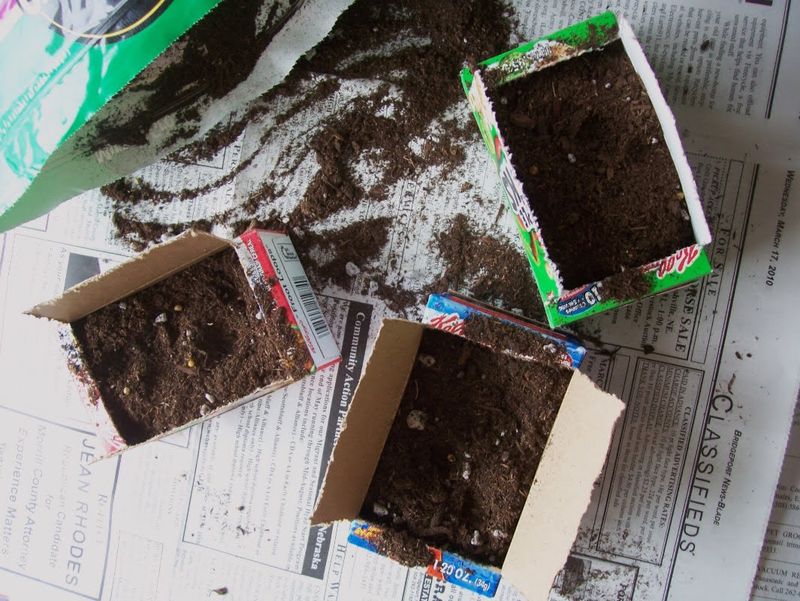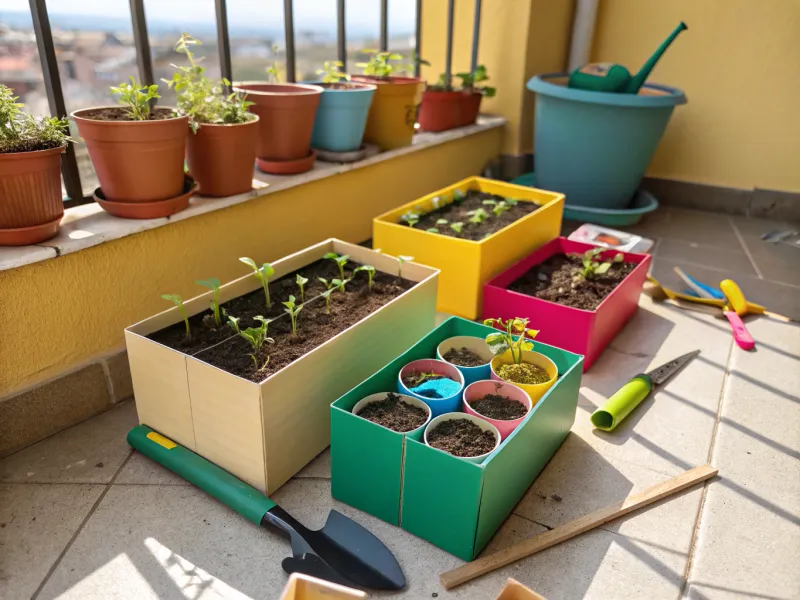Starting seeds at home doesn’t require a trip to the garden store. You probably have plenty of items lying around your house that can be repurposed into seed starters. These creative solutions are not only eco-friendly but also cost-effective.
Here are eleven household items you might never have thought of using to get your garden growing.
1. Toilet Paper Rolls
Toilet paper rolls are biodegradable and can be transformed into perfect seed starters. Cut the roll in half to make more manageable pots, then fill with potting soil. Plant seeds and water gently.
As the seedlings grow, these rolls can be planted directly in the garden. They decompose, improving the soil’s organic matter.
This method reduces waste and fosters healthy plant development. Keep them in a tray to catch any water drainage, making it a tidy and efficient option for your indoor gardening endeavors.
2. Plastic Bottles
Repurpose plastic bottles as seed starters by cutting them in half. Use the bottom portion for planting; fill it with soil, and plant your seeds. The clear plastic lets you monitor root growth and soil moisture easily.
Poke holes in the bottom for drainage and place them on a tray to catch excess water. This urban-friendly gardening solution utilizes waste and provides a mini greenhouse effect, promoting quicker germination. It’s a great way to reduce plastic waste while starting your garden.
3. Eggshells
Eggshells make excellent seed starters due to their natural drainage and nutrient content. Begin by cracking eggs near the top, emptying the contents, and rinsing the shells. Once dry, fill each shell with soil and plant your seeds. The calcium in the shell benefits the seedlings.
Place the eggshell halves in an egg carton to keep them upright. As the seedlings grow, transplant them directly into the soil. The shell will break down, enriching the earth. This method is both sustainable and practical, utilizing what you already have in the kitchen.
4. Ice Cream Cones
Unused ice cream cones can serve as fun and biodegradable seed starters. Fill each cone with soil and plant your seeds. The cones hold soil well and will decompose in the garden, providing nutrients.
This playful method is perfect for involving kids in gardening. Place the cones in a tray to catch water and maintain shape. As seedlings grow, plant them directly into the soil with the cone. It’s a delightful way to engage the whole family in eco-friendly planting, turning everyday items into garden treasures.
5. Citrus Peels
© Complete Gardening
Citrus peels such as oranges and grapefruits can double as biodegradable seed starters. Once you’ve enjoyed the fruit, scoop out the flesh, leaving the peel intact. Fill it with potting soil and add seeds.
This natural pot not only biodegrades but also adds nutrients to the soil as it breaks down. Keep the peels in a tray or egg carton to maintain stability. When the seedlings are ready to transplant, plant the peels directly in the garden. This method is eco-friendly and fragrant, adding a pleasant aroma to your planting routine.
6. Newspaper Pots
Transform old newspapers into biodegradable pots for starting seeds. Fold the paper into pot shapes and fill them with soil. Plant seeds and water gently. As seedlings develop, these pots can be transplanted directly into the soil, where they will decompose.
This method is cost-effective and reduces paper waste. It’s ideal for gardeners looking for an eco-friendly solution and is easy to create with just a few folds. Keep them in a tray to catch water, making them a neat option for indoor seed starting.
7. Egg Cartons
Cardboard egg cartons can be repurposed into seed starters by filling them with soil and planting seeds in each compartment. These cartons are biodegradable, making it easy to plant them directly into the ground once the seedlings are ready.
Add water sparingly to keep the soil moist without oversaturating the carton. This method is sustainable, easy, and utilizes common kitchen waste. It’s an effortless way to start your garden and is perfect for small spaces.
8. Mason Jars
Mason jars can be used as mini greenhouses to start seeds. Fill them with soil and plant your seeds. The glass provides warmth and retains moisture, promoting germination.
Ensure proper drainage by adding a layer of small stones at the bottom. This stylish method is perfect for urban gardeners and those with limited space.
The jars can be reused season after season, offering a sustainable and attractive option for seed starting.
9. Tea Bags
© Complete Gardening
Used tea bags can be repurposed as seed starters. Simply tear the top of the bag to plant seeds directly inside. The tea provides added nutrients, boosting seedling growth.
Keep the bags moist and in a warm location to encourage germination. This method recycles kitchen waste and enriches the soil.
It’s a simple yet effective way to start seeds and can be easily placed on a tray to manage moisture. Tea bags break down naturally, making them an environmentally friendly choice.
10. Cereal Boxes
Cardboard cereal boxes can be repurposed into seed-starting containers. Simply cut the box into segments to create individual pots, then fill them with seed-starting mix. The cardboard absorbs water, helping to maintain humidity.
Additionally, it breaks down over time, making it easy to plant these biodegradable pots directly into your garden. This innovative approach not only recycles waste but also simplifies the transplanting process.
You’ll have an eco-friendly and cost-effective way to kickstart your gardening journey right from your breakfast table.
11. Shoeboxes
© Complete Gardening
Shoeboxes are more than just for shoes; they make excellent seed starters. Line the box with a plastic bag to prevent leakage, fill it with soil, and plant your seeds. The box’s size is perfect for accommodating multiple seedlings. Place them in a sunny spot to let nature do its magic. The cardboard sides provide warmth and insulation, promoting healthy growth. Once the seedlings are ready for transplanting, simply cut the box apart to avoid disturbing the roots. From wardrobe storage to a garden essential, shoeboxes are a versatile tool in seed starting.

